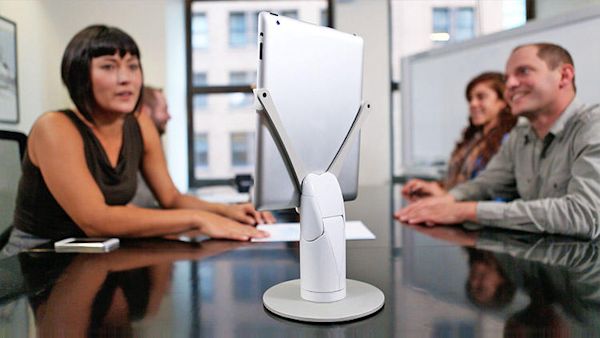[Another potentially valuable application of telepresence technology; this is from ZDNet, where the story includes another image. For more on Professor Fischer’s work, see his University of Utah webpage. –Matthew]
Telepresence robots to beam psychologists into schools
Researchers in Utah are experimenting with robots to solve a pressing problem: There aren’t enough pediatric psychologists to go around.
By Greg Nichols for Robotics | November 4, 2015
Researchers in Utah are using an inexpensive robotic platform to help teachers in rural areas implement programs for children with special needs.
It’s another example of the early adoption of telepresence robots by educators and service providers, which I’ve written about here before. While offices are coming around to telepresence solutions for remote workers, teachers and school administrators seem to be readily embracing the technology, which they see as a way to maximize limited resources while bringing needed services to students.
The platform that the Utah researchers are experimenting with is called the Kubi from Revolve Robotics. The device, which costs around $600, is a robotic cradle that holds a tablet computer. During video conferencing, the remote participant can steer the cradle to look around a room. “Kubi” means “neck” in Japanese.
(You can test drive the Kubi for yourself via your browser by visiting revolverobotics.com and clicking the “Try Kubi” button in the upper right. Be warned … you’ll get a good look at some diligent Revolve Robotics employees when you conference in and those employees will get a good look at you.)
The researchers are also working with robots from Double Robotics, which makes tablet-compatible telepresence platforms that are pricier than the Kubi but offer full roaming capabilities thanks to a set of wheels.
“Broadly speaking, there are two things we do as educational psychologists,” says Aaron Fischer, an assistant professor at the University of Utah who has been conducting research on the use of telepresence robots in pediatric psychology. “The number one job is assessing students.”
In particular, Fischer works with high-needs special ed students who may be prone to aggressive or self-injurious behavior. Assessment needs to be done in-person as it often requires substantial interaction and trust-building between the psychologist and the student.
“The second job we do,” Fischer tells me on a recent phone call, “is to provide ongoing consultations with teachers so they can effectively work with these students.”
Ideally, qualified school psychologists would be on every K-12 campus in the country to provide ongoing and on-call consulting services for teachers. But there’s a shortage of school psychologists nationwide. Even if there were enough qualified professionals to meet demand, many districts wouldn’t have the resources to keep psychologists on staff at every school.
“What we’re trying to figure out,” Fischer says, “is how we solve this problem from a practical standpoint. Of course I’ve used video conferencing in my own life. So the question was whether the technology could be an appropriate, acceptable, and effective way to do consultations with teachers, particularly in rural areas that may be difficult to access with regularity.”
Fischer and his colleagues started by testing basic video conferencing clients found on most tablets. Teachers in their test group reported that video chats could acceptably replace face-to-face consultations in most cases. Next Fischer tested video conferencing with the Kubi cradle, which gave the psychologists the ability to look around the classroom.
“There was a lot more flexibility with the robotic platform. When you have that simulated eye contact you get a lot of the nuance of social interaction. It creates a more engaged, comfortable experience, which is important for what we do.”
The technology seems especially promising in situations where psychologists want to observe teachers in front of a class. “When I’m there in person sitting in a classroom, I’m moving my head back and forth between the teacher and the students. The Kubi platform lets me do the exact same thing.”
Fischer stresses that video clients and telepresence robots are not replacements for school psychologists. But resource-strained districts can use the technology to help bring services to students who need them. Fischer and his colleagues are now seeking grant funding to expand their test bed and launch a pilot program.
